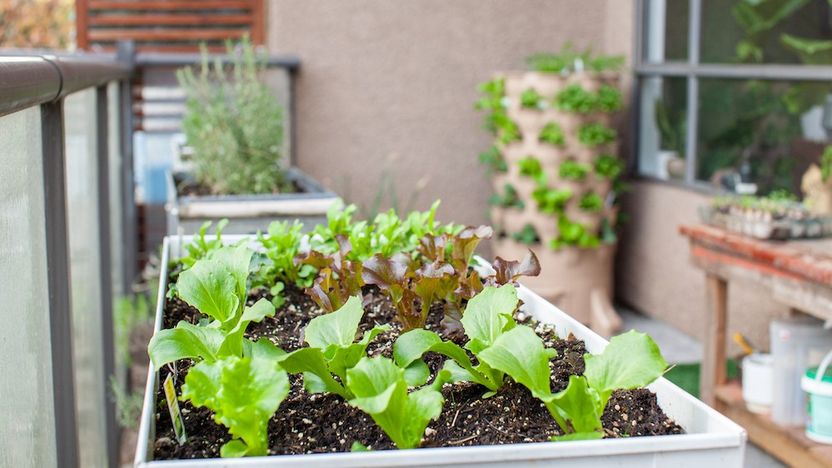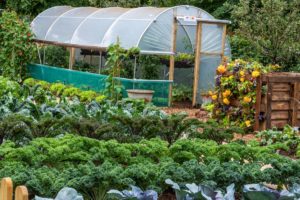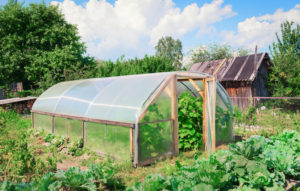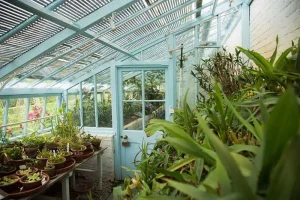Growing your own veggies at home not only saves you money on groceries but also provides you with fresh, healthy produce that is free of harmful chemicals and pesticides.
With the right know-how and tools, creating a self-sustaining veggie garden can be easy, enjoyable, and rewarding.
We’ll walk you through simple steps to help you get started on your journey towards homegrown goodness.
From choosing the perfect spot for your garden to nurturing healthy plants, we’ve got all the tips and tricks you need to succeed in creating a thriving vegetable garden that feeds both your body and your soul.
Choose the right location
Make sure the garden is located in an area that gets at least 6 hours of sunlight a day. Also, ensure that the spot is level and well-drained.
This will ensure that your plants receive the necessary light to grow and thrive.
Make sure the spot is level and well-drained.
A level surface will prevent water from pooling and potentially damaging your garden, while well-drained soil will help to prevent over-saturation and root rot.
Proper drainage is especially important if you live in an area with heavy rainfall or a high water table.
By choosing the right location, you’ll set the foundation for a healthy and productive garden.
Prepare the soil
Test the pH level of your soil and amend it if necessary. Also, add organic matter like compost or well-rotted manure to improve soil health.
Before you can start planting your vegetables, it’s essential to prepare the soil.
Testing the pH level of your soil is an excellent place to begin.
Most vegetables prefer a slightly acidic to neutral soil pH (between 6.0 and 7.0), so if your soil is too alkaline or acidic, you’ll need to make adjustments.
Add lime to raise the pH, or elemental sulfur or aluminum sulfate to lower it.
In addition to adjusting the pH, it’s important to add organic matter to improve soil health.
Compost or well-rotted manure are excellent choices, as they will not only improve soil fertility but also enhance the soil’s structure, making it easier for roots to grow and for water to drain.
If your soil is heavy clay or sandy, you may also need to mix in some organic matter to loosen it up and improve drainage.
By taking these steps to prepare your soil, you’ll set your vegetables up for success and ensure a bountiful harvest.
Choose the right plants
Select plants that are well-suited to your climate and soil type. For example, if you have a hot and dry climate, choose plants that are drought-tolerant.
When it comes to choosing the right plants for your garden, it’s essential to select plants that are well-suited to your climate and soil type.
If you have a hot and dry climate, choose plants that are drought-tolerant, such as succulents, cacti, and grasses.
These plants have adapted to survive in conditions with low rainfall and high temperatures, so they’re ideal for areas with dry summers.
On the other hand, if you live in a cool and moist climate, you may want to choose plants that prefer more humid conditions, such as ferns, hostas, and mosses.
These plants thrive in environments with high humidity, so they’re perfect for shaded areas with consistent moisture.
In addition to considering the climate, it’s also important to choose plants that are compatible with your soil type.
If you have sandy soil, choose plants that prefer well-draining soil, such as azaleas, gardenias, and ligularias.
These plants prefer soil that drains quickly and doesn’t retain water, so they’ll thrive in sandy soil.
If you have clay soil, choose plants that prefer moist soil, such as irises, peonies, and daffodils.
These plants prefer soil that retains moisture, so they’ll do well in clay soil.
By selecting plants that are well-suited to your climate and soil type, you’ll be creating a garden that’s healthy, thriving, and low maintenance.
These plants will be less likely to experience stress and disease, and they’ll be able to thrive in their ideal environment.
With a little research and careful planning, you can choose the perfect plants for your garden and enjoy a beautiful and bountiful outdoor space.
Use efficient irrigation
Install a drip irrigation system or soaker hoses to deliver water directly to the roots of the plants, reducing waste and evaporation.
Installing a drip irrigation system or soaker hoses is a highly effective way to water your plants without wasting precious resources.
These systems deliver water directly to the roots of the plants, ensuring that the water is absorbed quickly and efficiently.
Unlike traditional sprinkler systems, which can lead to significant evaporation and runoff, drip irrigation and soaker hoses minimize water loss and ensure that your plants are receiving the precise amount of water they need.
This not only saves water, but it also helps to reduce the amount of time and effort required to maintain your garden.
By investing in an efficient irrigation system, you’ll be able to enjoy a thriving and healthy garden with minimal maintenance and upkeep.
Mulch the soil
Apply a layer of organic mulch like straw or bark chips to retain moisture, suppress weeds, and regulate soil temperature.
To ensure a thriving garden, mulching the soil is an essential step.
By applying a layer of organic mulch, such as straw or bark chips, you can retain moisture, suppress weeds, and regulate soil temperature.
Mulch acts as an insulation blanket, protecting the soil from extreme temperature fluctuations and preventing soil moisture from evaporating too quickly.
This helps to maintain a consistent soil environment, which is ideal for root growth and healthy plant development.
Moreover, mulch can prevent weeds from growing, reducing the need for herbicides and saving you time and effort.
As the mulch breaks down over time, it will add organic matter to the soil, improving its fertility and structure.
So, take the time to mulch your soil properly, and enjoy the numerous benefits it brings to your garden.
Incorporate pollinators
Attract bees, butterflies, and other pollinators by planting a variety of flowers and herbs that provide nectar and pollen.
To incorporate pollinators into your garden, it’s essential to plant a variety of flowers and herbs that provide nectar and pollen.
Bees, butterflies, and other pollinators are attracted to plants with bright colors, fragrant blooms, and dense foliage.
For a vibrant and pollinator-friendly garden, consider planting sunflowers, zinnias, marigolds, lavender, and herbs like thyme and rosemary.
These plants not only attract pollinators but also provide them with a source of food and shelter.
By planting a mix of annuals and perennials, you’ll create a diverse and thriving ecosystem that will flourish for years to come.
Remember to choose plants native to your region to ensure their longevity and success.
Use natural pest control
Instead of using chemical pesticides, use natural methods like introducing beneficial insects, like ladybugs or lacewings, to control pests.
Introducing beneficial insects, such as ladybugs or lacewings, is a highly effective and eco-friendly way to control pests in your garden.
These natural pest control methods are a great alternative to chemical pesticides, which can harm the environment and human health.
By introducing beneficial insects, you can promote a balanced ecosystem in your garden, where these insects will feed on pests and help to maintain a healthy and thriving garden.
For example, ladybugs are a popular choice for controlling aphids, whiteflies, and spider mites.
These beneficial insects feed on these pests, reducing their populations and helping to protect your plants from damage.
Similarly, lacewings are known for their ability to control aphids, mealybugs, and scale insects.
By releasing these beneficial insects in your garden, you can effectively control pest populations while avoiding the use of harmful chemicals.
To introduce beneficial insects into your garden, you can purchase them from gardening supply stores or online retailers.
Once you have purchased them, simply release them into your garden, making sure to follow any specific release instructions provided by the supplier.
With proper care and maintenance, these beneficial insects will thrive in your garden, helping to keep pest populations under control and promote a healthy and thriving garden.
Monitor and adjust
Regularly check the garden’s progress, and make adjustments as needed. This can include pruning, watering, and controlling pests and diseases.
To ensure the success of your garden, it is essential to regularly monitor its progress and make adjustments as needed.
This can include pruning, watering, and controlling pests and diseases.
Pruning involves removing any dead or damaged plant material, which can help prevent the spread of disease and encourage healthy growth.
Watering is important, especially during hot or dry weather, as plants need consistent moisture to thrive.
Controlling pests and diseases is critical, as they can quickly spread and cause significant damage to your plants.
Regularly inspect your plants for signs of pests or diseases, and take prompt action to address any issues.
By monitoring and adjusting as needed, you can ensure your garden is thriving and productive.
Want More? Dive Deeper Here!
Hey there! If you’re the type who loves going down the rabbit hole of information (like we do), you’re in the right spot. We’ve pulled together some cool reads and resources that dive a bit deeper into the stuff we chat about on our site. Whether you’re just killing time or super into the topic, these picks might just be what you’re looking for. Happy reading!






